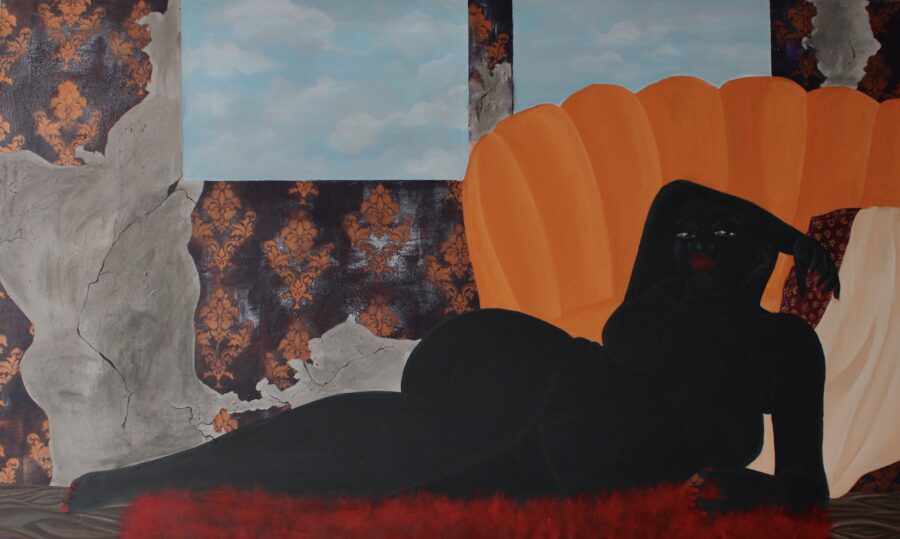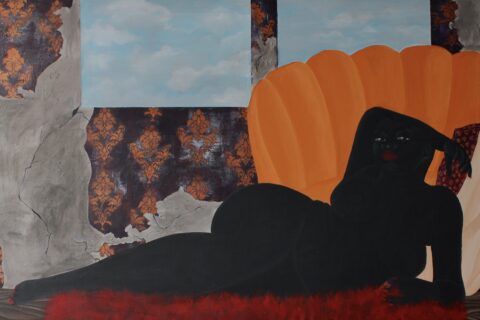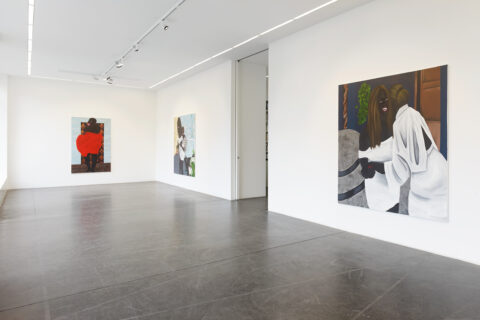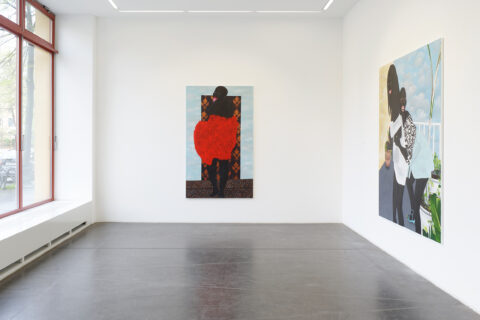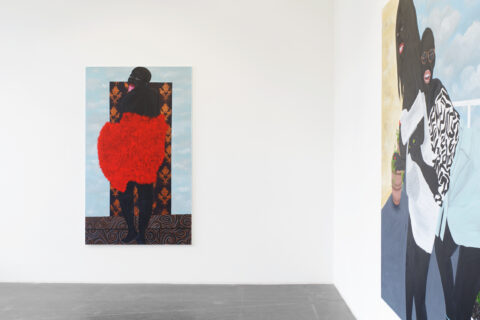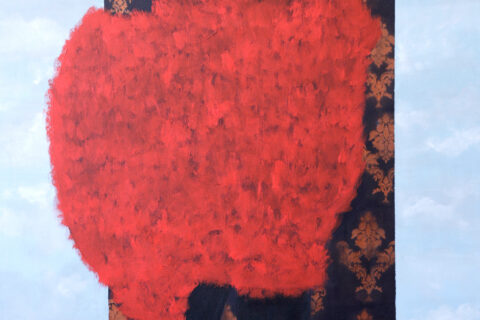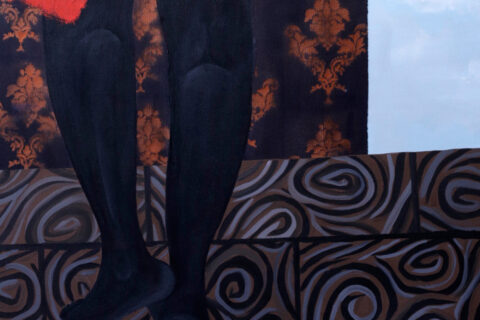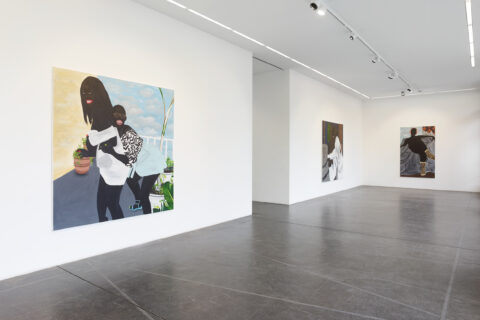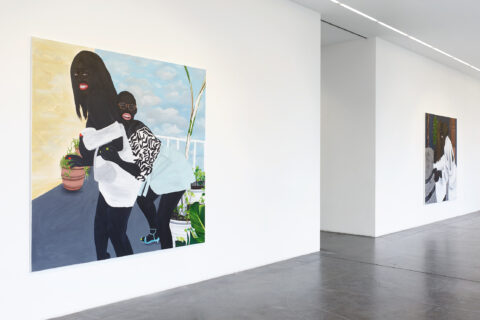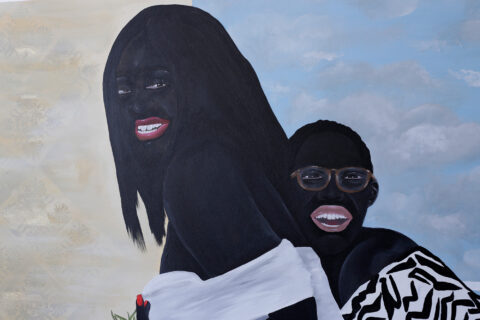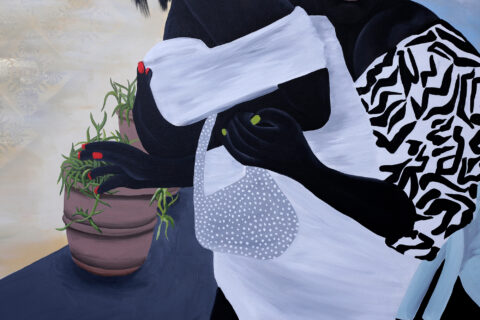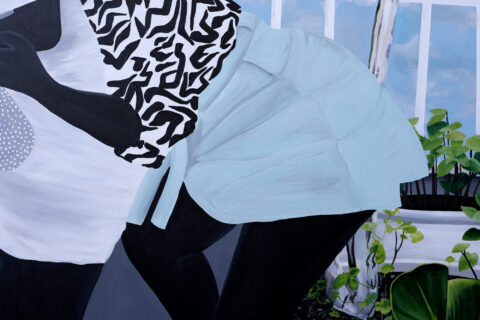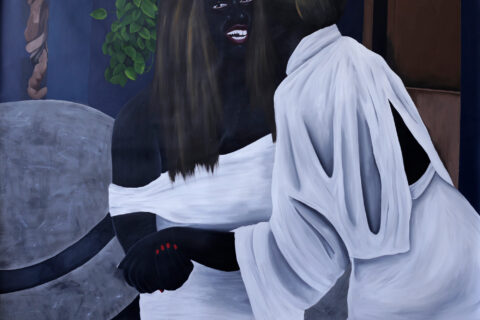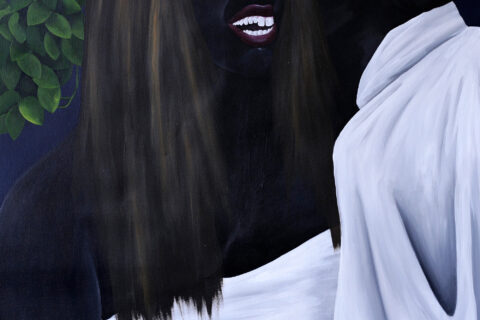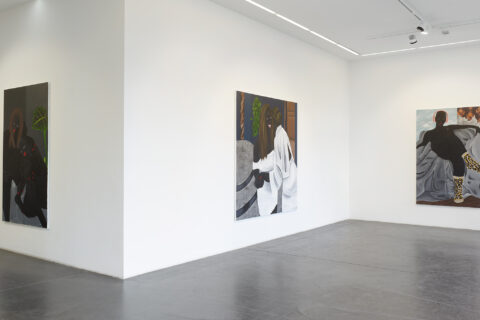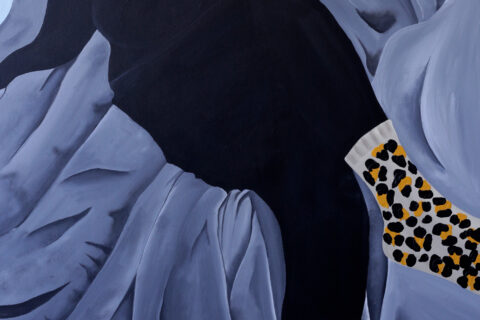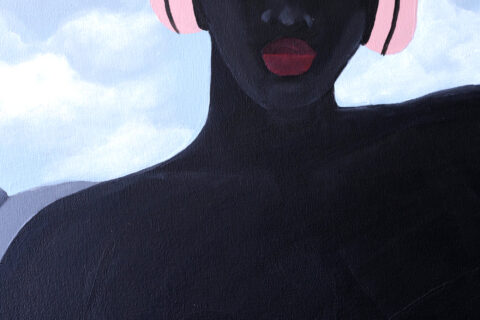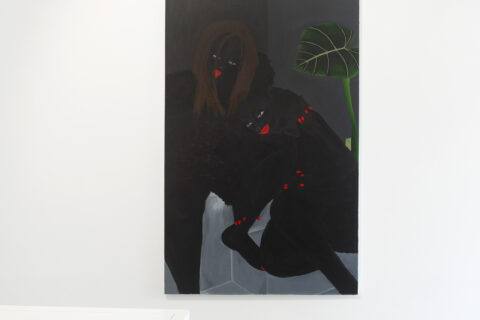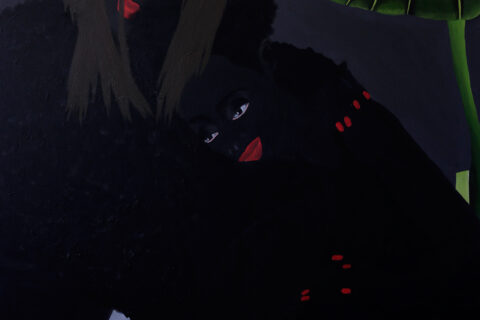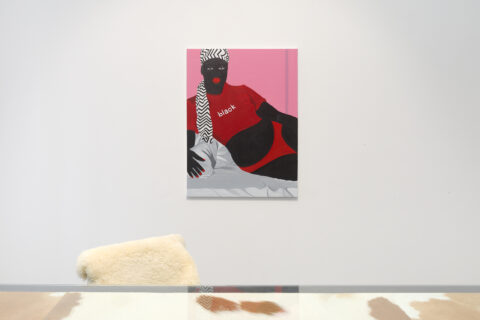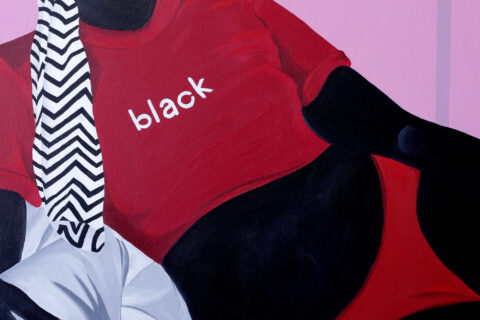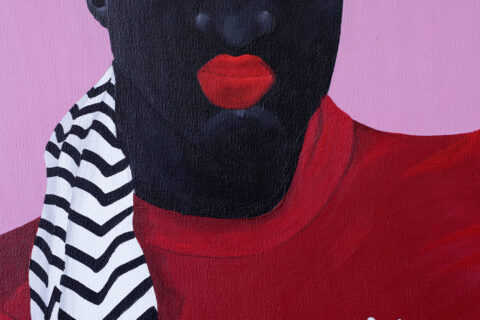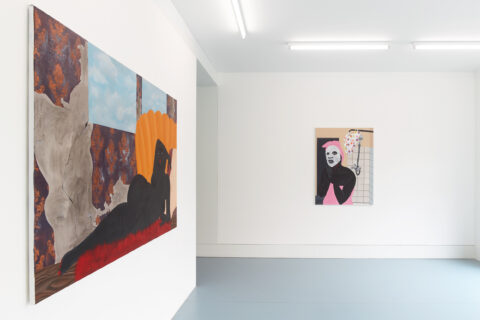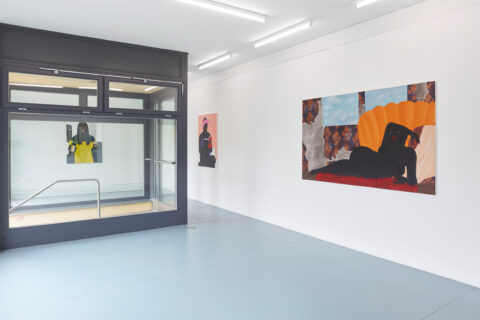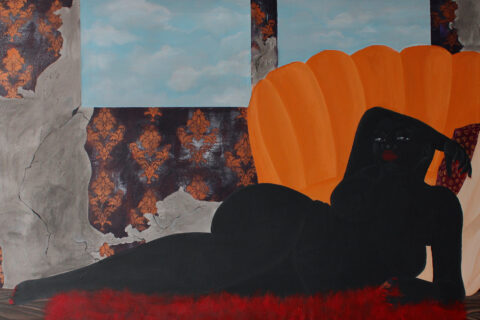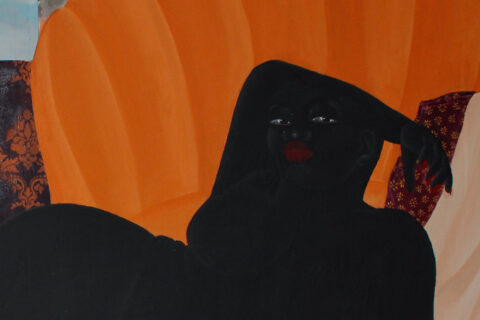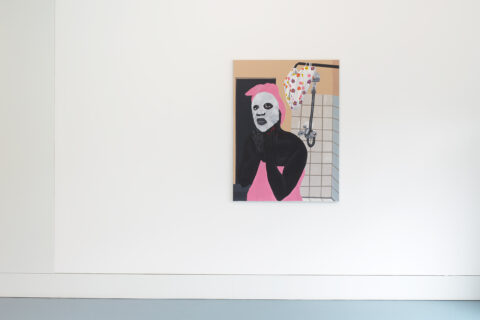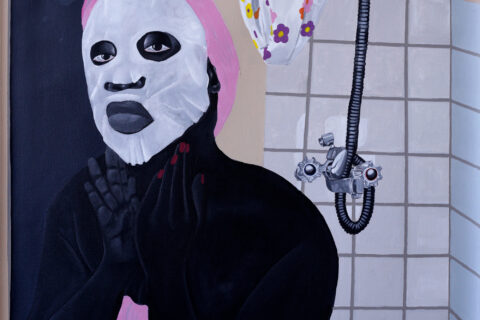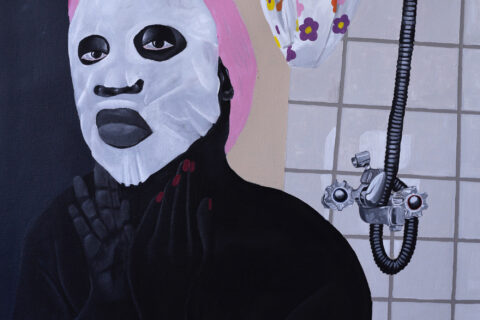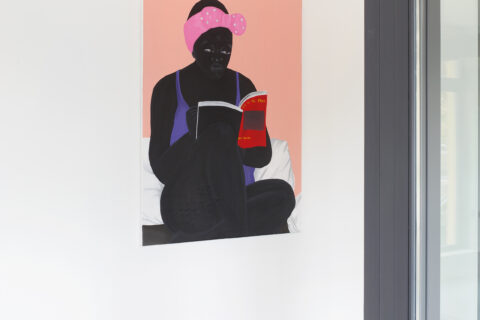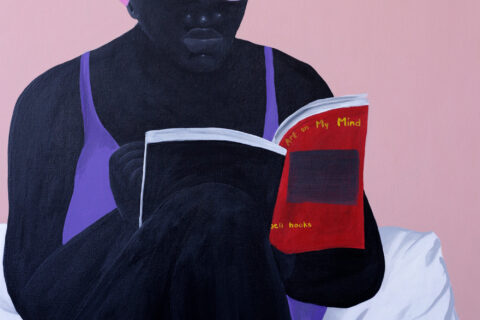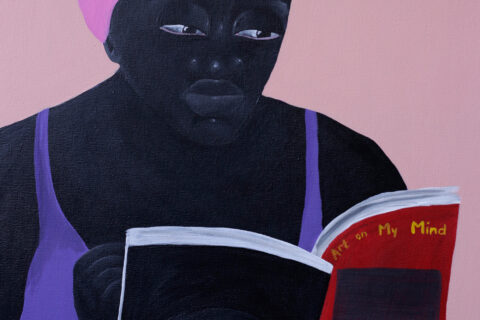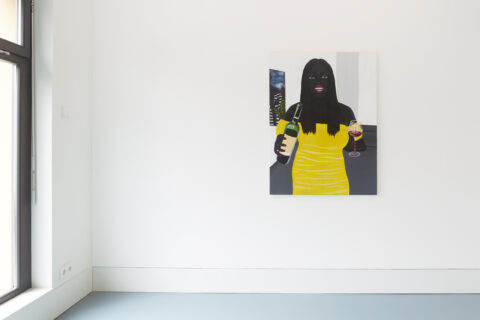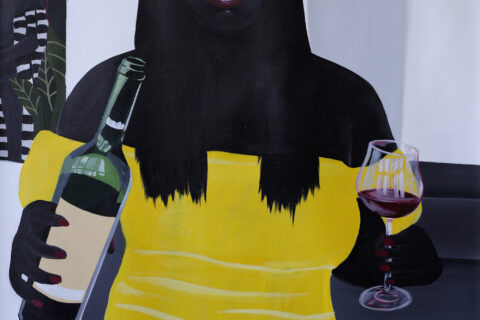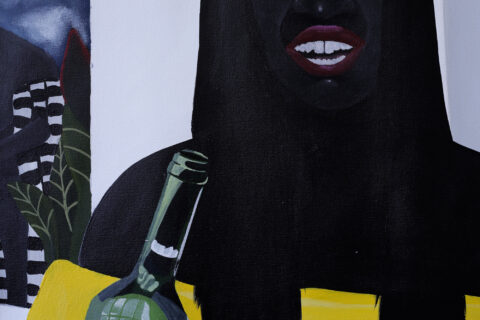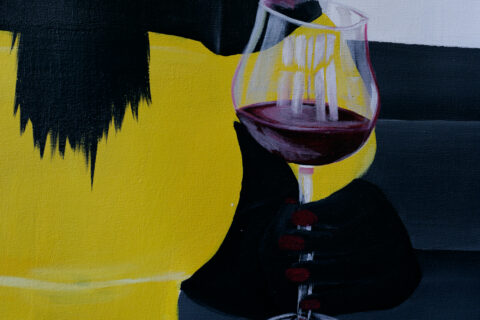Zandile Tshabalala beautiful experiment(s) Curated by Azu Nwagbogu
30/04/2021 – 26/06/2021
curated by Azu Nwagbogu
curatorial assistant: Togo Ntokozo Langa
Galerie Nagel Draxler
Weydingerstr. 2/4
10178 Berlin
Öffnungszeiten / Opening hours:
Dienstag - Freitag 11 - 18 Uhr, Samstag 12-17 Uhr
Tuesday - Friday 11am - 6pm, Saturday 12am - 5pm
Bitte vereinbaren Sie vor Ihrem Besuch einen Termin via Mail oder Telefon. / Please make an appointment before your visit via mail or phone.
Tel: +49-(0)30-40042641
Beachten Sie, dass Sie die Galerie nur mit einem medizinischen Mund- /Nasenschutz betreten dürfen. / Please note that you may enter the gallery only with a medical mouth/nose protection.
Press Release
beautiful experiment(s)
“I have crafted a counter-narrative liberated from the judgment and classification that subjected young black women to surveillance, arrest, punishment, and confinement, and offer an account that attends to beautiful experiments —to make living an art…”
— Saidiya Hartman (Wayward Lives, Beautiful Experiments).
For her first European solo exhibition, hosted at Galerie Nagel Draxler, Zandile Tshabalala (B. 1999. Soweto, South Africa) pays homage and takes inspiration from Saidiya Hartman’s seminal work, Wayward Lives, Beautiful Experiments. Hartman exhumes the lives of Black women in the aftermath of the official end of slavery in the United States using a meta-fictional approach. Tshabalala, likewise begins her ‘experiments’ as an artist in Post-Apartheid South Africa by adopting a similar approach that rejects and refuses received histories. Through words, Hartman performs ‘critical fabulation’ on registers, photographic archives, and documents of the women, flapper girls, and domestic servants of the early twentieth century United States. She restores the image of Black women of that era as sexual modernists, radicals, innovators and pioneers of today’s contemporary LGBTQI movement. Tshabalala, the artist, speaks paintings. She achieves something similar: Tshabalala diverts the colonial gaze onto the Black model and invents her narrative using those same archival, ethnographic formulations towards the self. Tshabalala embraces and rejects, in the same turn, clichés around the image, representation and labels attached to Black women into what may be best described as ‘Critical Transfiguration’. Critical because there is an awareness of the denigration of Black women in iconography and art history, and, Transfiguration because there is a beautification and restoration of this narrative. Take Manet’s Olympia, and compare that with Tshababala’s ‘lounging: G fabulous’. Tshabalala reverses the roles without bothering to include a servant. Her approach is not to reverse segregate, but in her words “an approach that aims to restore Black women without the need for violent hierarchies that reproduces those same inherited power structures that tried to keep us down”.
Tshabalala’s beautiful experiment(s) adopts a sort formalism, a polyphonic figuration and rendering of iconoclasm in Black representation in contemporary visual culture. She annihilates eroticism and exoticism as the standard bearers in traditional ethnographic colonial and neo-colonial gaze on the Black female body. The nude voluptuous, fleshy innocence of youth often represented as naive, shy, uncertain and halting is rather in charge, whether prostrate or whilst standing erect. There is no dissonance in mind and body with Tshababala’s subjects. Her portraits return the gaze and repossess her space. The voyeurism that was the main stay of ethnographic portraits of Black women and girls nurtured during the colonial period that still tails contemporary representation of Black women is still present but in reverse. It is moral judo reversal where the voyeur is not the audience but the voyeur is the sitter, the subject of her portraits. They seduce— like the genre of paintings of naked lascivious women often found in hotel rooms, yet with a very different tonality and stance. The space between the viewer and the subject still feels safe and intimate. It all feels familiar, exciting and titillating in the most salutary sense. The overt references to grandiose iconography with the velvet robes, beddings, and drapery in her boudoir, on her canvasses, enhance the feeling of intimacy and privilege. There is a range of sensibilities from soft tenderness to raw primal energies. Tshabalala masters her space and owns this narrative. beautiful experiment(s) brings us into liminal thresholds: the first between the past and the present and then that between the present and the future. We are seduced to reimagine the way images of Black female body is consumed and represented. There is an empirical reformulation of the subjects as they engage in the mundane, the domestic, the day to day. Through this Tshabalala radically reinvents perceptions of Black lives and showing not why they matter but simply that they matter.
There is a nod of acknowledgement towards the champions who have paved the way for her generation of Black artists, thinkers and performers. Noteworthy and in keeping with a more collaborative way of being, Tshabalala mentions the brilliant young artist Nonofatso Mothloki as one of the artists to inspire and motivate her practice but also acknowledges the more established Kara Walker, Nandipha Mntambo, Njideka Akunyili Crosby and Deborah Poynton as key.
With this solo presentation, Tshabalala dives, without apology into Post Modern Blackness, that is, the freedom that Black artists embrace as they make work that is anathema to overt didacticism. They do not feel the need to illustrate struggle, suffering, social upheaval and the usual modes of presentation of Black existence in visual culture. There is more subtlety in delivery and approach.
— Azu Nwagbogu
Image:
Zandile Tshabalala "Lounging l: G fabulous", 2021. Acrylic and mixed media on canvas, 120 × 200 cm
